To complete our quail safe area and to create a more varied and interesting terrain, I decided to experiment with all sorts of vegetation. some of which I had already used successfully in other quail areas. I wanted something which could not only speedily provide our quail with good cover and nesting sites but which also would provide an evolving habitat and a continuous food supply. I also complemented my ideas with reading about the wild habitats and the sorts of vegetation amongst which quail can be found in Nature.
Preparation
To create an initial and nutrient rich base for my plantings, I carried in several loads of compost, which the quail were more than happy to help me spread and incorporate into the soil. They simultaneously helped clear up as many invertebrates as possible too, although I was hoping that some of the latter would survive to reproduce.
I also set up a small pile of compost within a simple wooden framework, the quail's own basic compost bin! This is a great ant environment and the quail's favourite food are ant eggs particularly those of the flying ants which are large and a dusky pink and obviously highly prized (see below). However, Quail also love eating the ants as well! One of the marvelous ways in which quail help in the garden is that they will eat slugs, many chickens don't unless they have been trained up to do so as chicks by their mother. Therefore, the delicate-leaved plants in the quail safe area don't get the slug problems most thickly planted areas are subjected to.
Quail Appreciate Aromatics
Going on previous experiences with quail nesting, their favourite nest sites seem to be under aromatic plants, so my first plantings were of a large rosemary (Salvia rosmarinus) cutting and a lemon balm (Melissa officinalis), quail will eat the latter, so it's worth planting quite a large root of it with well-advanced foliage.
Plant More
Conversely, I also planted a goji cutting in there too but that gets the leaves stripped off at quail-high, so I have to make sure as it grows as a lax shrub, it's staked up and out of their reach. As with everything in this garden though I find that planting a largish amount of any item means that there is fair shares for all and the way in which they strip the goji of leaves convinces me they either love it and/or need it in their diet.
Upcycling To Save Money and Time & Using All Available Space
As mentioned in the film I planted up several different vegetables, which had come in the 'chicken boxes', I get from my local organic shop. This is the damaged fruit and vegetables that can't be sold but what can't be eaten can usually be re planted. Quail aren't that keen on carrot tops, so I planted a fair few whole carrots, which also went on to produce very pretty flowers. The turnips and the salsify I planted were constantly nibbled but I managed to get some going in pots first and then they stood a better chance. I also planted some succulents in hanging planters and a large edible passion flower that I had grown from seed. Quail like cover but also planting quite thickly in certain areas, gives the illusion of more space and allows them to make territories. These plants also of course attract insect life and I did plant brassicas because the quail love cabbage white caterpillars, they chase the butterflies too.Practical And Pretty
I also used my quail space as an over-spill from our other greenhouse and planted some tomatoes in pots with wooden trellis to hold the leaves above quail height as they will nibble at them!
One word of caution, I leave my wooden box containers open at the bottom to allow for better root growth and to keep them from drying out but this also can allow access for rodents to propagate, mice don't bother me but I did have occasion to leave the connecting door open between the safe area and the lower-greenhouse and a rat got in and started a nest in the box! Luckily I worked this out pretty quickly and evicted her!
Repurposing
One of the only places that still seems to have wild quail locally is an organic dairy farm and I also know from experience how happy my quail were free-ranging with their mother hen in the old traditional meadow next to our home. So when a friend asked us to help out with her garden - it seemed like an ideal opportunity to get some tufts of ready-made meadow. One woman's weeds are other people's plants. Our task being to clear an area of meadow for new vegetable gardens. Not only did I take a pair of quail to help clear wire worms, etc., but I also got to take the clods of soil and vegetation home for the rest of the quail to sift though and for replanting
Quail and Toxicity
Another plant I used which was both very pretty and perfumed was the large decorative tobacco - nicotiana sylvestris. This is an architectural plant used in many parks at the back of borders and also very useful in shady and woodland gardens. They are also very useful in greenhouses as their perfume attracts insects including night pollinators such as moths. Tobacco plants belong to the Solanaceae aka nightshade family and as such all parts of the plant contain toxic alkaloids in varying amounts and degrees dependent on variety. This ranges from toxic to mildly irritant and it is the the latter category of which sylvestris is said to belong to. The flowers of sylvestris are headily fragrant but the leaves and stems exude a rather acrid scent and a sticky fluid, which coupled with the 'furriness' of the leaves should be off-putting. However, quail do nibble at them and it should be further noted that quail can consume toxic substances without ill-effect to themselves. Hence 'coturnism', which is a condition mostly experienced by hunters consuming migratory quail which have, due to the conditions of their journey, sometimes consumed toxic plants. When choosing plants for a quail area, it should therefore be a consideration that any that are toxic to humans may not be so to quail and these poisons may potentially end up in their eggs. However, as with all things commonsense should prevail, as should personal research and with many plants it is about dosage. Many birds and animals use medicinal plants which are also often toxic to self-medicate, particularly for internal parasites.
What About the Winter?
When the foliage dies back in the Winter then the aromatic shrubs such as lavender, thyme and sage come into their own as they do not shed their leaves, which is yet another reason for planting them. However, leaves per se collected from a local forest or from the garden provide a beautiful and practical forest floor for the quail. Eventually these will break down, adding to the soil structure and providing a habitat that encourages invertebrates. I also bring in pieces of bark and moss, which provide further interest and nutrition for the quail.
Housing?
Until next time, all the very best from sunny Normandie!
© 2023 Sue Cross




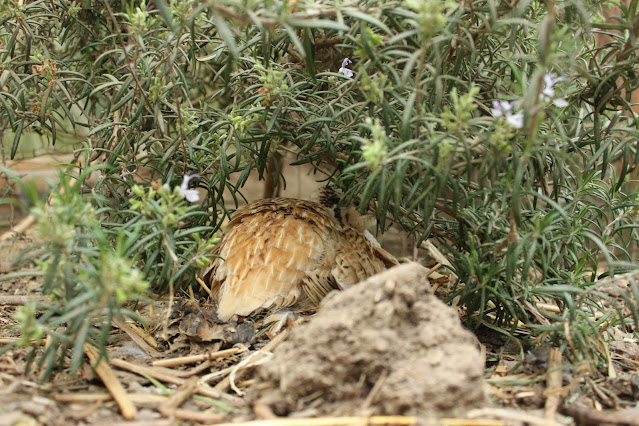
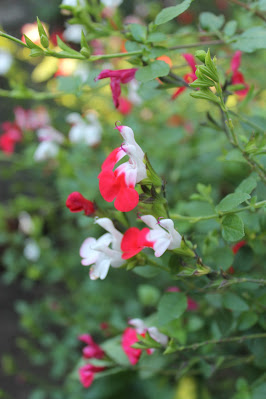
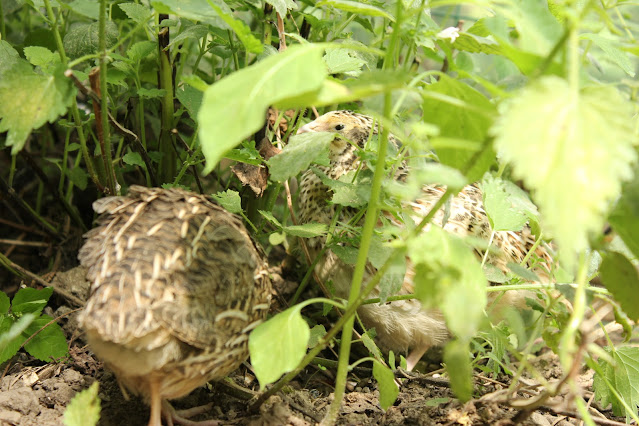
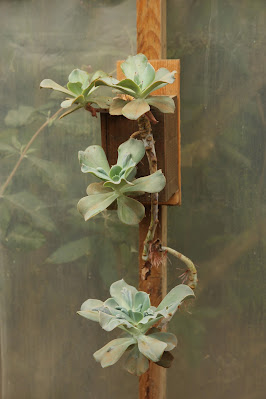

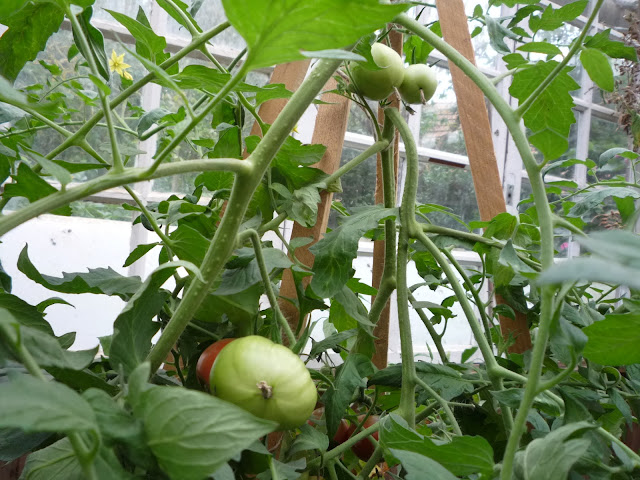

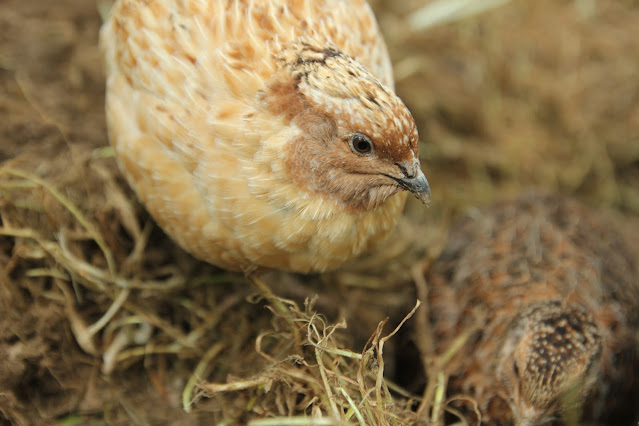
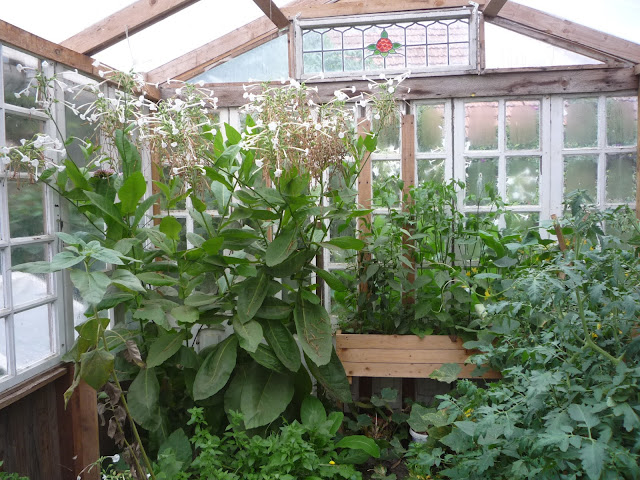

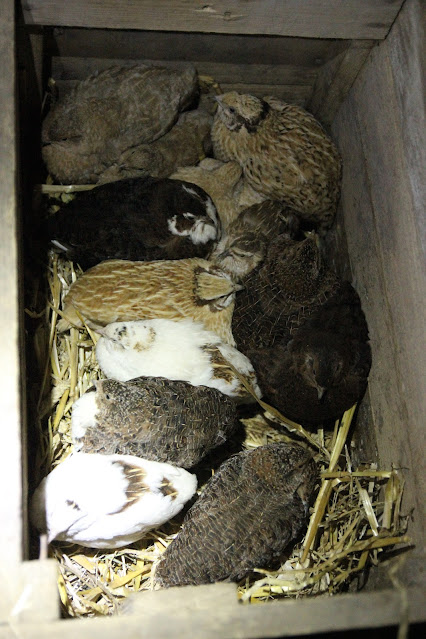



I love the care and attention you have given to the quails' living arangements and I've gleaned some good ideas for my (possible) future quails :). I really do hate seeing them in those tiny cages!
ReplyDelete